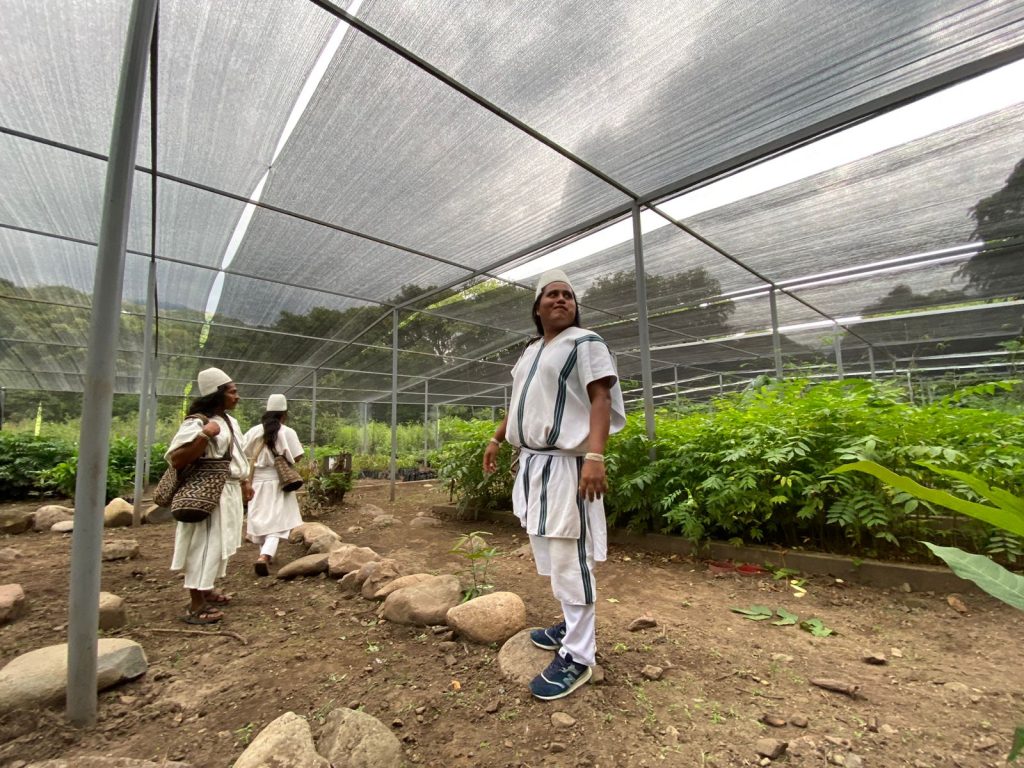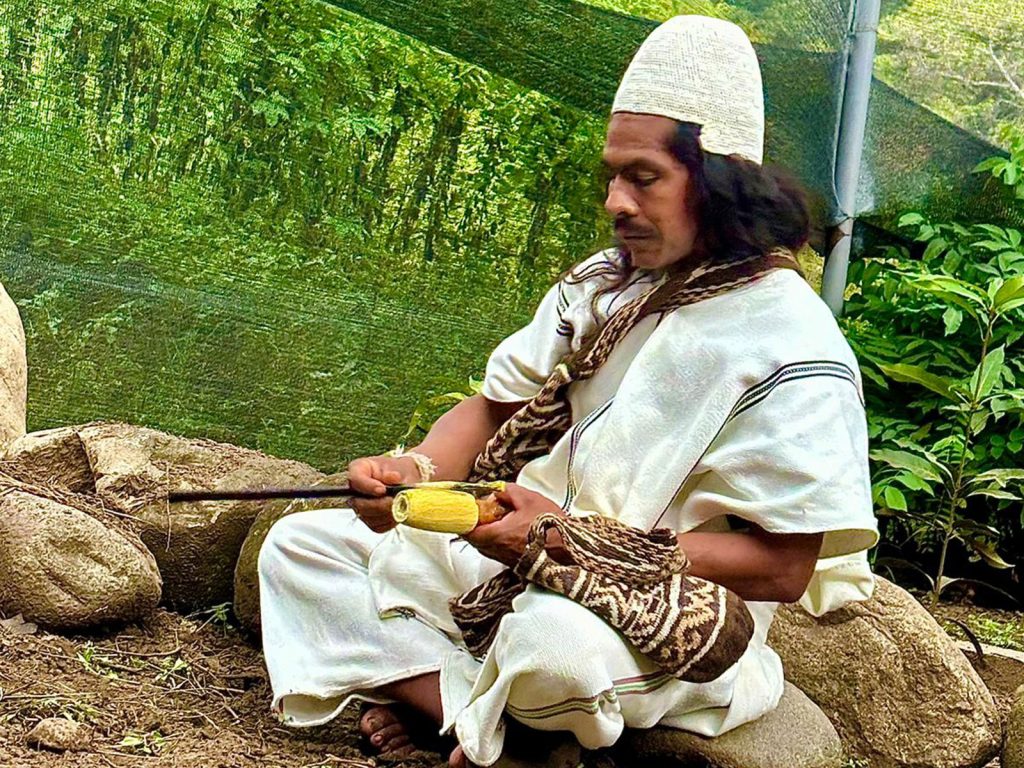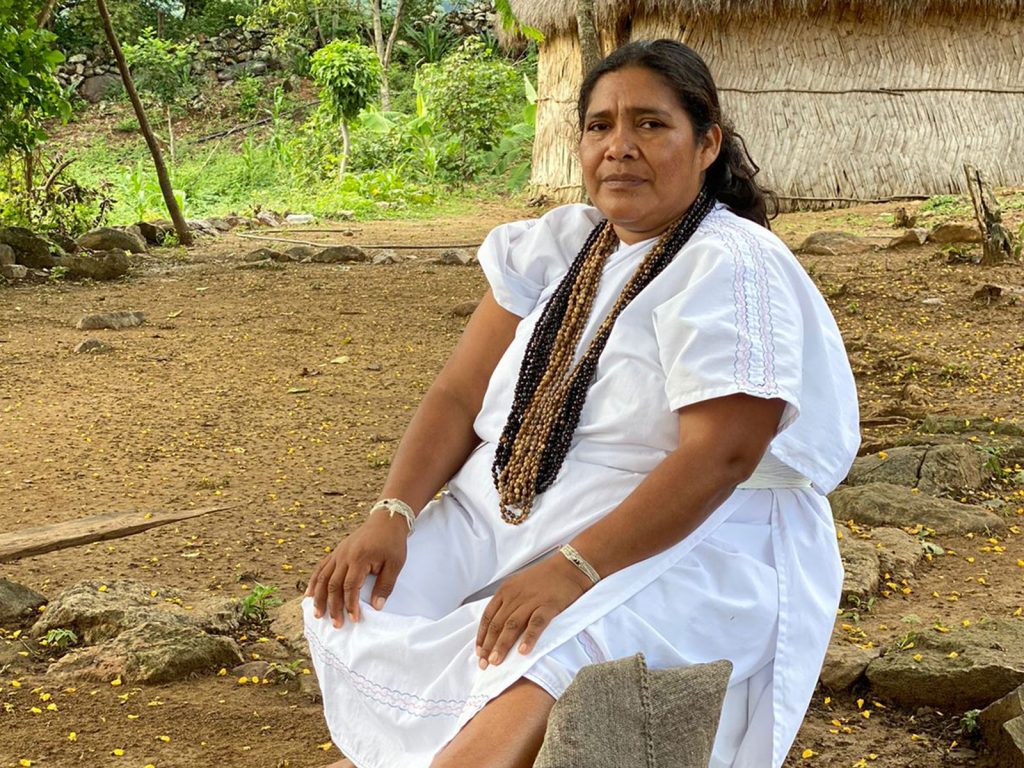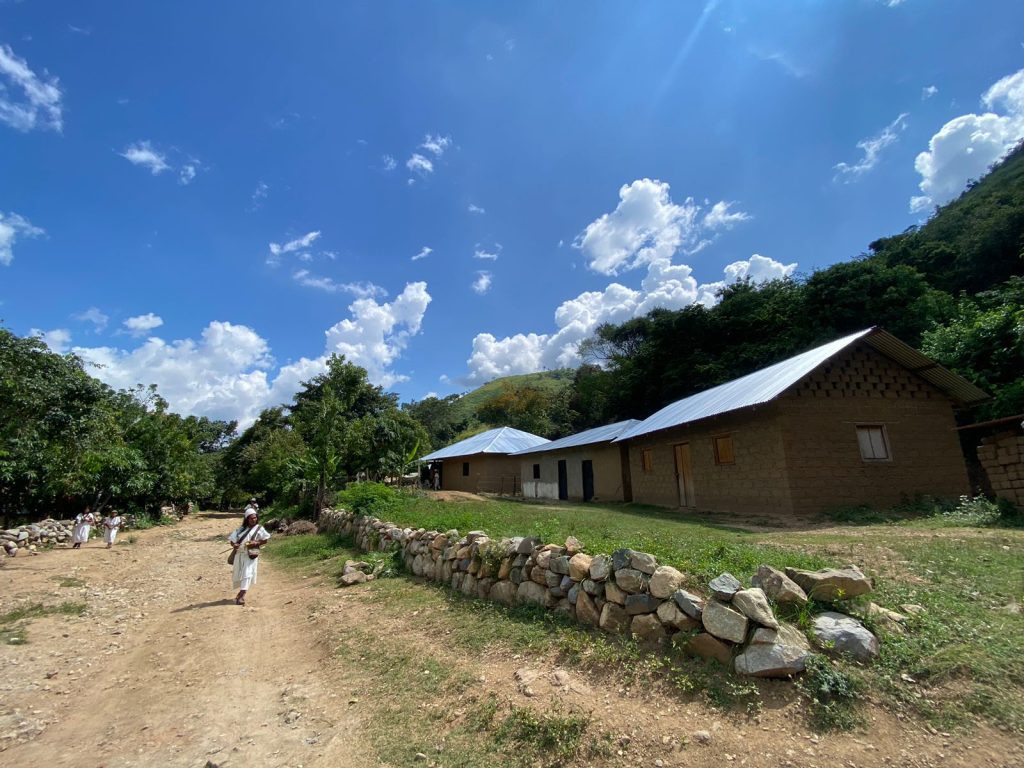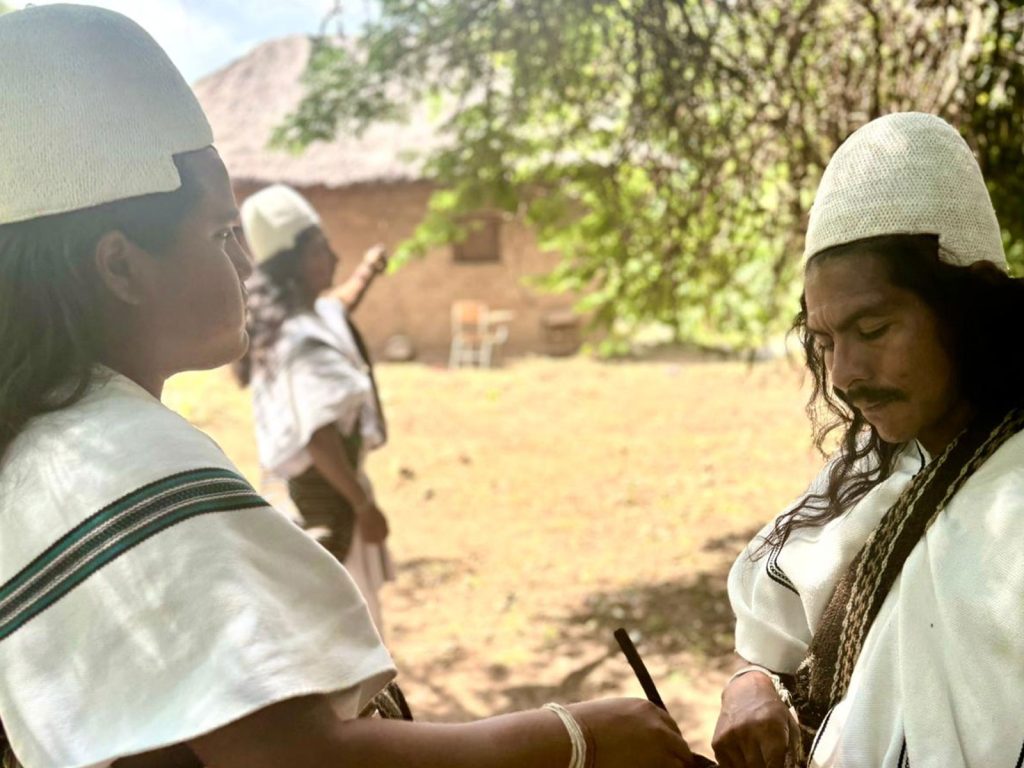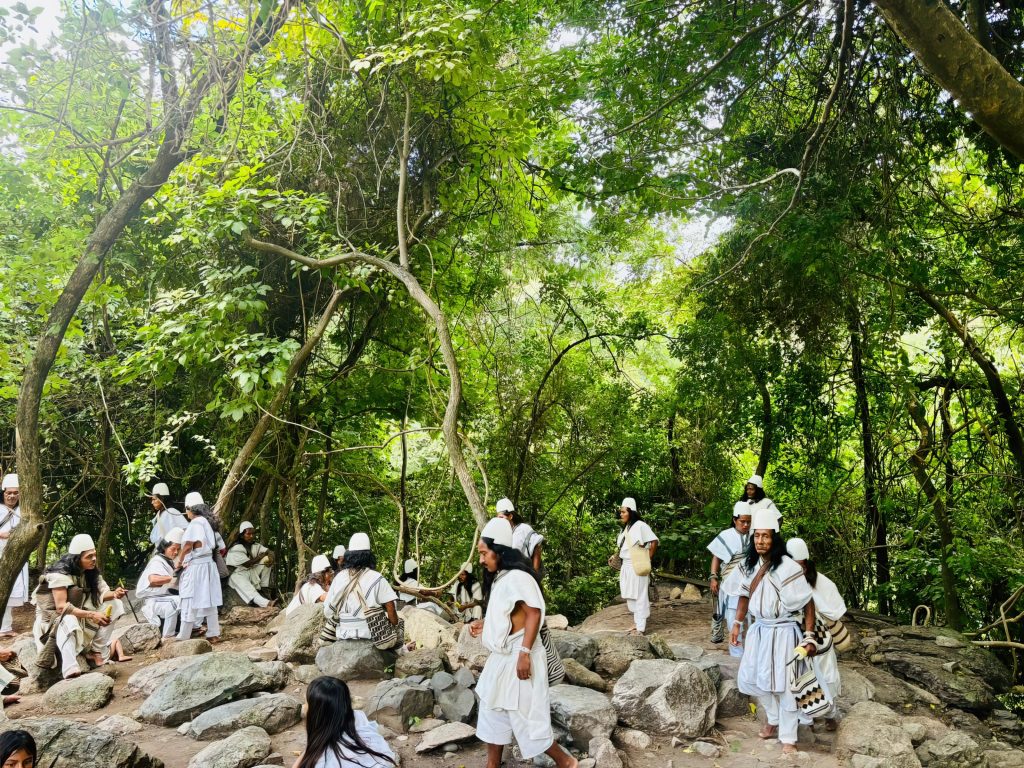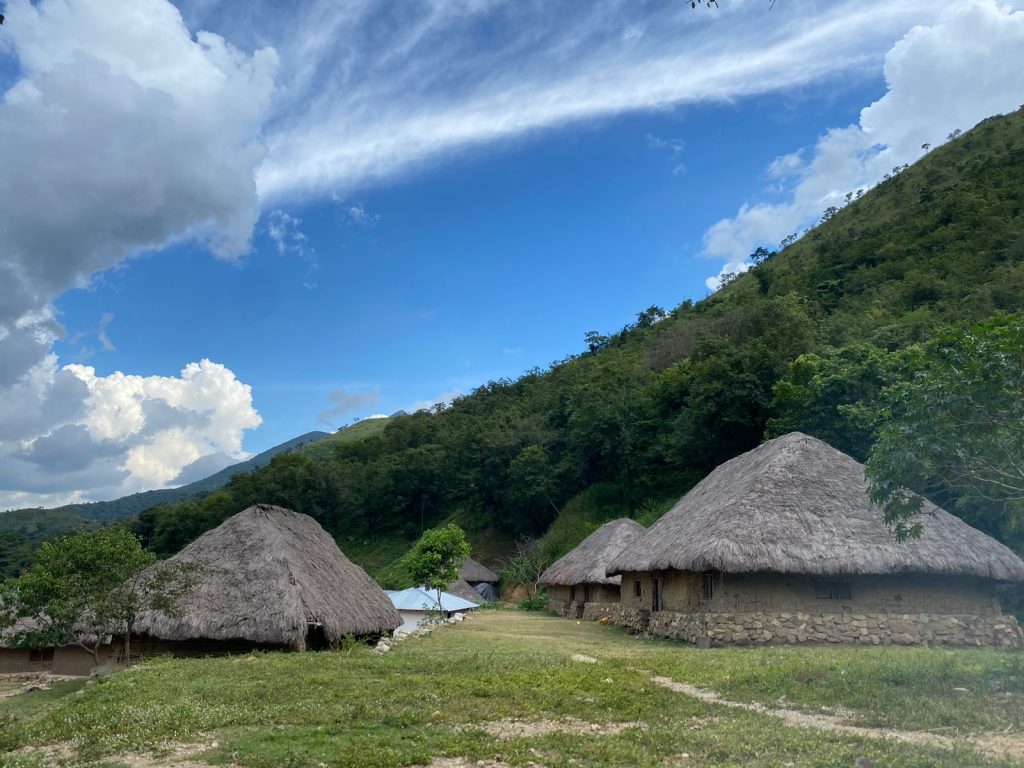The Arhuaco people are located in the mountainous massif of the Sierra Nevada de Santa Marta (SNSM), in the north of Colombia, in the departments of Cesar, La Guajira and Magdalena. Their territorial area includes the Arhuaco Reservation of the Sierra, Businchama Reservation, Kogui Malayo Arhuaco Reservation (shared with the Wiwa people and the Kogui people). Their ancestral territory is delimited by the system of sacred sites of the Black Line (shared with the Kogui, Wiwa and Kankuamo peoples) (see map). The Tayrona Indigenous Confederation was founded in 1973 as a representative and governing body of the Arhuaco people.
The Arhuaco people have historically defended their territory from the advance of colonization under the guidance of the mamus (highest spiritual authority) and the Law of Origin. The Arhuaco have protected their knowledge system and made progress in the recovery, defense and delimitation of the ancestral territory as a traditional area of special protection and spiritual, cultural and environmental value.
The Heart of the World Program is an initiative of the SNSM peoples for the care, conservation and healing of the territory. Through it, a pilot of environmental and traditional restoration is being implemented, as well as the natural regeneration of native species and degraded ecosystems in 60 hectares of the forest where 10 thousand trees have been planted and it is projected to plant 10 thousand more by the end of 2024. Some of these trees grow in the nursery of the Gun Aruwun center where the community cares for and reproduces seeds and native species with cultural, food and medicinal functions.
The Arhuaco People preserve a vision of conservation based on the Law of Origin and the ancestral ordering of the territory given by it. In the last 50 years, the organization has recovered ancestral territories, mainly through the acquisition of land and the establishment of cultural villages (talanquera communities). Part of its struggle has been to stop the construction of the Besotes dam, as well as to halt mining projects, infrastructure, monocultures, illicit crops, among others. Instead, it has claimed and demanded the environmental protection of the ancestral territory of the Línea Negra within the framework of the Territorial Council of Cabildos of the SNSM, the Permanent Roundtable for the Coordination of Indigenous Peoples and Organizations, as well as in direct dialogue with different actors such as the Ministry of Environment and Sustainable Development, National Natural Parks of Colombia, the Ministry of the Interior, corporations, the Presidency of the Republic, the National Land Agency, IGAC, among others.

